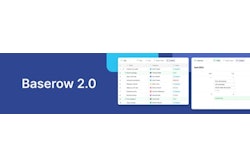
Three centuries ago, procurement officers kept meticulous ledgers that tracked what they planned to buy, what they actually purchased and when they paid for it. The compliance challenges they faced are identical to those faced today.
For instance, invoice exception rates climbed from 9% to 22%. Organizations are still catching problems after invoices arrive. After billions spent on procurement networks and technology, the truth is that too many organizations have been trying to solve the wrong problem.
That’s because compliance is treated as something to detect and correct rather than something to prevent. But compliance can’t be bolted on through more controls and checkpoints. It must be designed into the workflow.
Why detection-first approaches keep failing
Detection-first compliance fails for three interconnected reasons: It happens too late to prevent damage, the technology solutions designed to fix it have made things worse, and users respond by finding workarounds. These aren’t isolated problems. They’re symptoms of the same underlying issue.
The 60-day risk window. Consider what happens between invoice approval and payment. For many organizations, this spans 60 days or more — 20 days to match invoices to purchase orders and receipts, then another 30-90 days until payment. During that window, a lot can go wrong.
A supplier could face bankruptcy. Sanctions lists get updated. Cybersecurity breaches occur. ESG violations surface. By the time your detection systems catch these issues, the damage is done. You’ve already committed to payment or, worse, already paid a supplier who shouldn’t have been paid.
The network illusion. For the past two decades, traditional procurement networks promised to solve these problems. The reality? They’ve made things worse. While firms using modern procure-to-pay technology achieve exception rates around 10%, the industry average has climbed to 25.5%. Research shows that invoice inquiries have followed a similar path, rising from 9% to 22% of the AP workload.
The networks didn’t eliminate silos. They hampered collaboration. Organizations route everything through these portals instead of talking directly to suppliers, and adoption remains low. You’re not managing supplier relationships — you’re managing a system that sits between you and your suppliers.
The human factor. Users work around systems that create friction. When procurement processes are too rigid or too complex, people find easier paths: shadow procurement, where users buy on personal credit cards and expense it later, off-contract purchasing through unauthorized suppliers who offer faster delivery, T&E spend that bypasses procurement entirely, and virtual cards used outside established controls. Every workaround represents a compliance gap, and every compliance gap increases risk.
If compliance feels like an obstacle rather than a natural part of the workflow, people will find ways around it.
These failures share a common root: Without alignment on what “good compliance” actually means and how to achieve it, detection (rather than prevention) is the default.
Lessons from history: Prevention requires planning
There’s some parallels between today’s procurement problems and the strategic failures of the past.
In 1685, the Earl of Argyle led a military expedition that should have succeeded. He had resources, supporters and a clear target. Yet the campaign collapsed at the first crisis.
Why? He never defined a shared vision. Different factions — his finance team, military advisors and political allies — each had their own interpretation of success. Argyle tried to please everyone, saying yes to competing demands while keeping his actual plans secret. When the inevitable crisis hit, the lack of alignment proved fatal.
Modern compliance without vision. The same pattern plays out in procurement today. A requisitioner needing office supplies faces procurement’s three-quote requirement, finance’s preferred vendor that’s not in the system and treasury’s 10-day compliance hold. Rather than navigate three systems, the user expenses it on a card. Nobody’s rules were broken, but compliance failed.
The prevention mindset. Real prevention starts with alignment: What outcome are we trying to achieve? Once that’s clear, build multiple pathways rather than forcing everyone through a single rigid process. Plan for exceptions before they happen.
Military planners know this: Plan your mission, then plan for failure, then plan what happens when that fails. Procurement needs the same mindset.
Prevention by design: Key principles
Leading organizations are implementing specific tools and approaches across five key principles.
1. Eliminate friction, not control
Users comply when it’s easier than working around the system. Conversational interfaces beat 50-field forms. Quick quote capabilities let requesters get pricing from pre-approved suppliers. Mobile receipt capture beats paper piles. Real-time processing beats end-of-quarter scrambles. The goal isn’t less control but control that doesn’t hinder work.
2. Make compliance invisible
The best compliance happens without users thinking about it:
● Guided workflows that feel natural
● Unified search surfaces internal catalogs
● Supplier punch-outs and contracted items in one interface, with compliant options appearing first
● Supplier data that’s pre-validated at the point of purchase
● Country-specific compliance packages that apply the right tax rules and documentation requirements automatically based on the invoice location.
When compliance is embedded in the workflow, it stops feeling like a separate task.
3. Automate the preventable
Many compliance failures are predictable. Contract-based invoicing allows suppliers to create invoices directly from rate cards, pre-populating line items and pricing to eliminate mismatches before submission. Organizations can implement 2-way matching to contracts, 3-way matching to goods receipts or 4-way matching with quality inspections, depending on their industry requirements, all automated to catch discrepancies at creation rather than during payment:
● Expense policy violations are flagged in real-time rather than being discovered during an audit.
● Duplicate payments get caught at creation through automated validation.
● Catalog analytics identify unused items or failed searches that signal gaps in compliant purchasing options.
Automation catches these issues before they become problems.
4. Supplier collaboration as strategy
Self-service portals aren’t just convenient — they’re compliance tools. When suppliers can create invoices from contracts, see payment status in real time and correct errors themselves through the portal, they stop calling AP.
When they have visibility into the entire cycle from submission to payment, they understand what’s required and deliver accordingly. Strong supplier relationships mean better compliance outcomes.
5. Single source of truth
When procurement data lives across multiple systems, compliance becomes impossible to track. Compliance dashboards that display non-purchase order invoices, matching status, payment status, and next approvers in one view provide teams with the visibility they need. One platform for procurement, AP, expenses and card spend means one set of rules, one approval process and one dashboard for monitoring. No reconciliation between systems or gaps where non-compliant transactions hide.
The working capital advantage
Prevention also unlocks working capital. When invoice processing shrinks from 20 days to 2 days, organizations gain time to capture early payment discounts. Real-time visibility into payment status means paying at the optimal time for cash flow. Dynamic discounting capabilities let finance teams decide which invoices to pay early based on current cash availability rather than following rigid schedules. The cash trapped in inefficient processes is freed to become strategic capital.
The shift is happening now
Nearly 300 years ago, procurement officers faced the same compliance challenges we do. The difference is we now have the technology to prevent problems rather than just detect them.
The question isn’t whether to invest in compliance. You’re already spending on it through exception handling, late payment penalties, damaged supplier relationships and lost discounts. The real question is whether you’ll continue to pay to catch problems after they occur or start preventing them from happening.




















